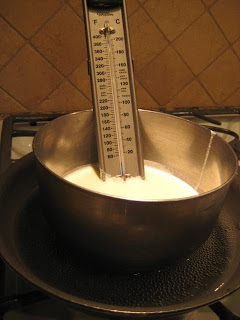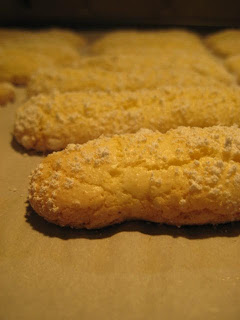The word pudding can mean different things depending on where you are. In the UK, they say, pudding could mean dessert, or a sort of pastry which is in no way related to our All-American snack packs of chocolate custard.
English Pudding (or pud, as it is lovingly called by some) was the Daring Bakers challenge for this month. From my understanding, there are a few categories of puddings. You can break it down into sweet and savory or suet crust and sponge cake. I suppose you could categorize my pudding as sweet and with a suet crust, but I am not using suet (which is an animal fat similar to lard or the pieces of fat on uncooked bacon). I actually used butter for my crust, making almost a classic pie crust which is filled, steamed, and unmolded onto a plate. Inside the crust, you can have whatever you like, though I am doing a take on "Kentish Puddle" pudding. Kent being the area of origin; puddle describing the butter, brown sugar and fruit juices that make a little puddle around the unmolded dish. It is similar to a "Sussex Pond" pudding. Traditionally, Sussex Pond puddings have a whole lemon inside which is cooked for so long that it softens and becomes almost candied. To make it Kentish, currants or raisins are usually added. I am lucky enough to have tons of locally grown blueberries in my freezer, so I used them instead.
I based my recipe on this one, though I altered the filling and increased the amount of dough to fit my 3 individual pudding bowls. My filling consisted of cut up lemons (washed and scrubbed to get rid of as much wax and chemical ickiness as possible), blueberries (as many as could fit), and a mixture of 1 tablespoon of butter and 1/4 cup brown sugar, mashed together into a paste. The original recipe uses 2 sticks of butter altogether, which seems a little excessive to me.
I rolled it out and then divided it into 3 pieces. I cut off a third-ish of each peice and made a ball out of each section (six balls), then rolled them out into rounds.

After they each were rolled out, I used them to line the bowls and saved the smaller rounds for the lids. While lining, filling, and topping the puddings, just use your fingers and personal judgement to work out your issues. Patch up holes as you need to and make sure the top bits are secure. You may want to use a drop of water as glue.
(Please note that I filled them a lot more than what you see in the picture)
The recipe explained some complex wrapping of greaseproof paper (what even is that?) and foil so that the top crust would not get soggy from the steam. I was too confused for that so I had to come up with my own methods. First I made a little teepee out of wax paper and covered it in foil to look like this.
They steamed for about an hour in my makeshift steamer of a big pot with a metal strainer and some water boiling underneath.
When I took them out, they were nicely browned on most parts, but there was water on the tops. I unwrapped each pudding and made a giant circle out of parchment paper to place over them while they steamed for another hour.
Here is what they looked like.
To unmold, run a butter knife around the edges, place your serving dish on top of the pudding, and flip them over. Lift up the pudding bowl and voila! Look at all that blueberry lemon goodness.
You can serve the puddings with custard, whipped cream, or just warm, by themselves like I did. Overall, I would say this recipe was a success. I was very surprised that the dough browned in the steamer! It was fun to work with dough for a change, and you should definitely give this recipe a try! I have never tasted a legit pudding, so I am not sure how accurate this is taste-wise.
Anyone from the UK out there who wants to validate for me? :)
xoxo,
allie


































